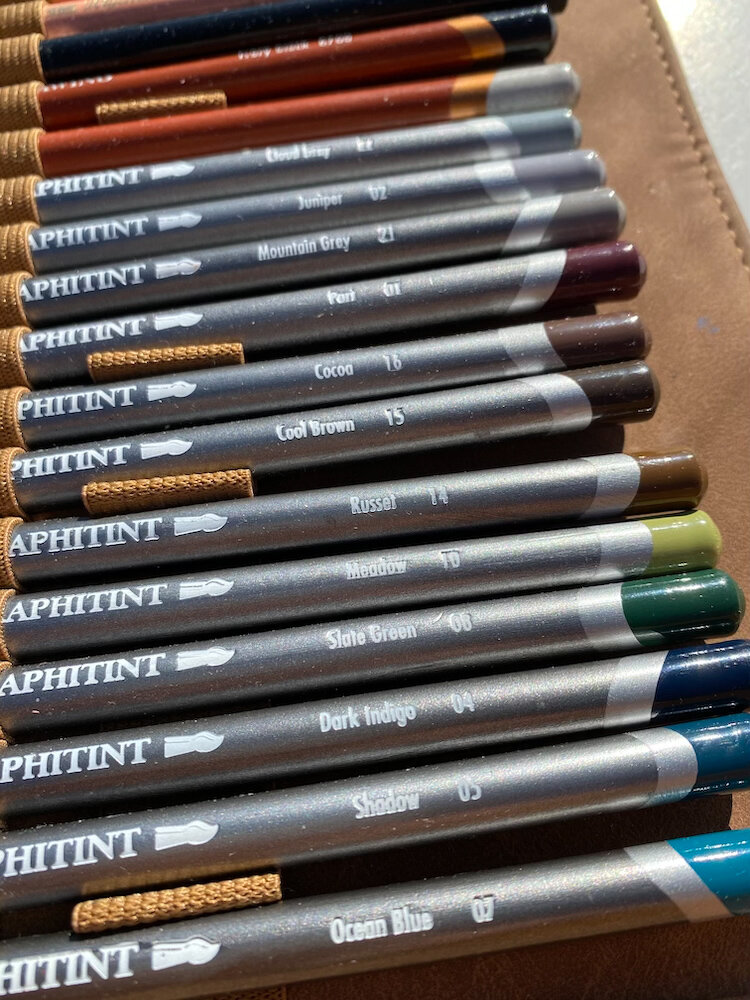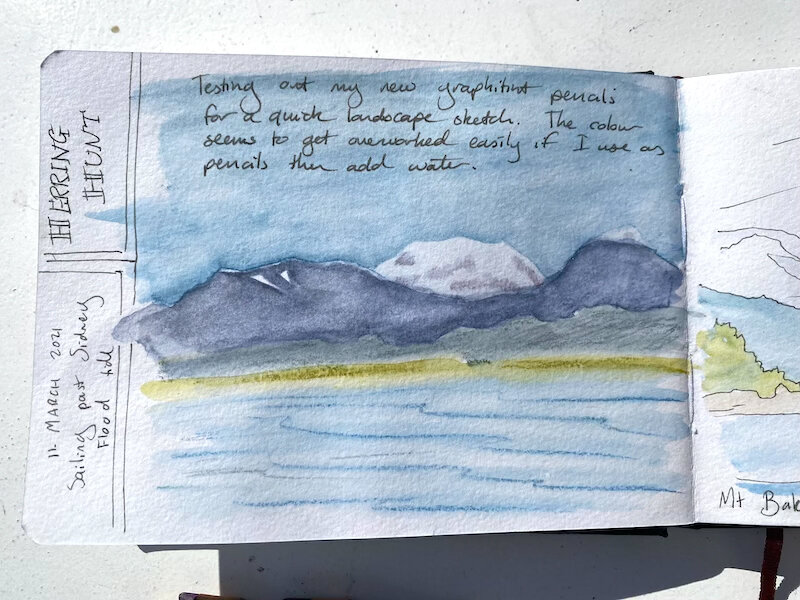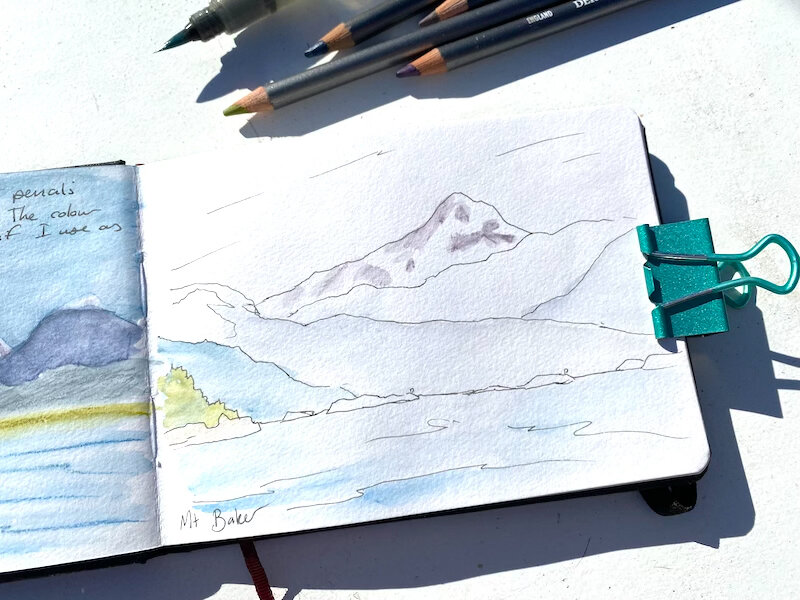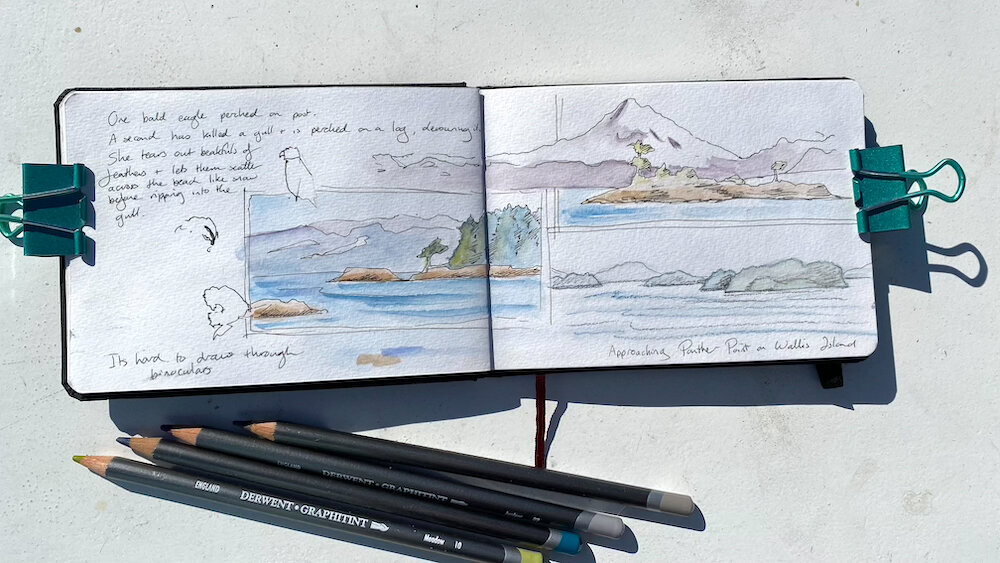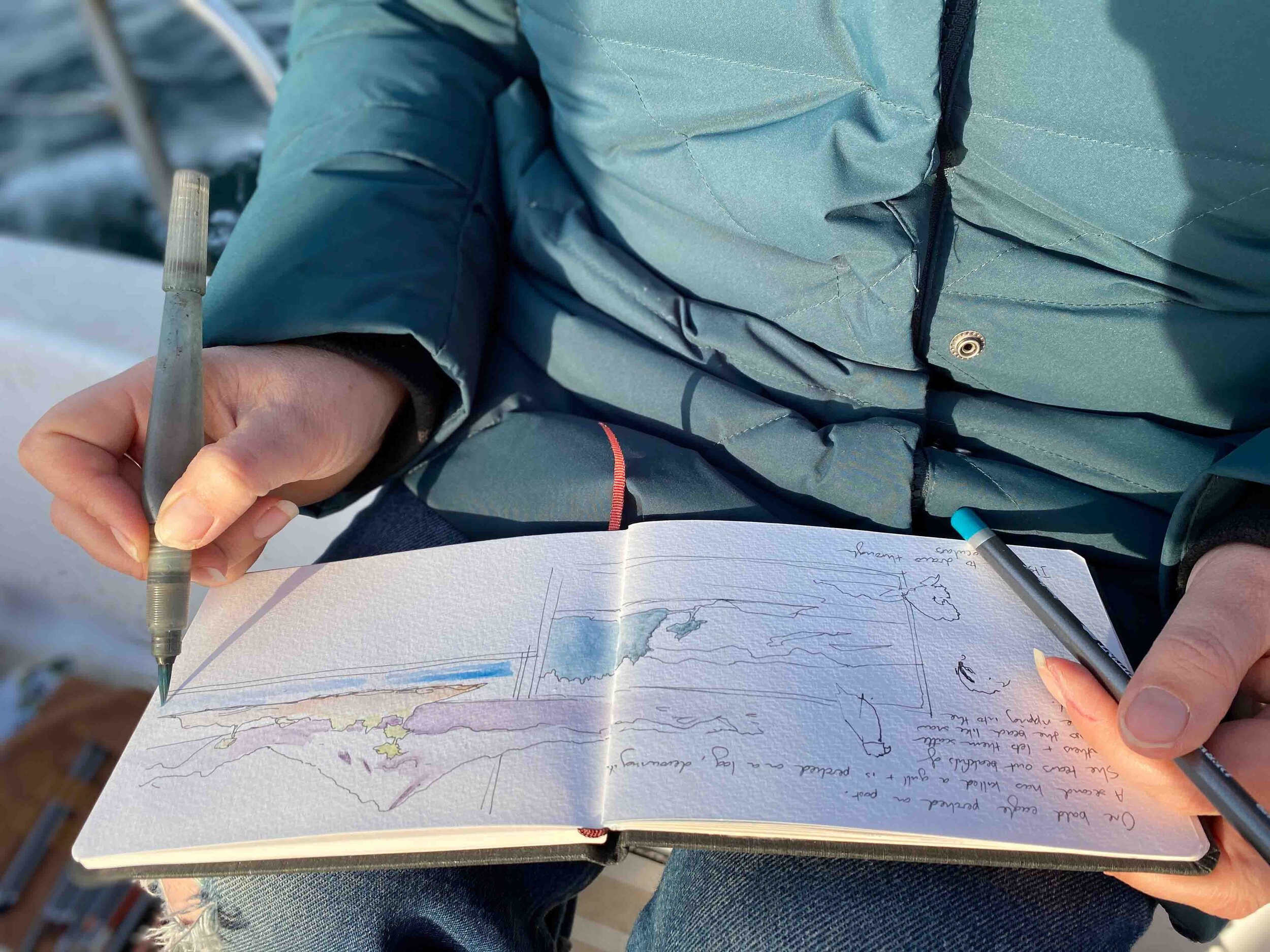Sketching with Derwent Graphitint Pencils
When I spotted Derwent Graphitint coloured pencils at the art store I was intrigued by their blend of pigment and graphite so picked up a small range of colours to try. Graphitint are water-soluble coloured pencils which can be used dry like regular pencil crayons, or activated with water to create washes and more painterly effects. My new collection soon received their first sea trial out on the boat; I wanted to see if they were useful tools for travel sketching and whether the colours would suit the atmospheric coastlines of BC. Here’s a review based on my initial experiments!
I’ve been using Derwent’s Inktense pencils for quite a few years now. They’re made of very vibrant sticks of ink that activate when wet and become permanent when they dry, but the colours are sometimes a bit too bright for BC’s moodier days. Graphitint pencils are made from coloured graphite, so I wanted to see how much that toned the pigments down. The colours are not permanent, so can be lifted and reactivated on the page- like waterclours or traditional aquarelle coloured pencils.
I was working in a Hahnemuhle A6 cold-pressed watercolour sketchbook, with a fairly light tooth. As I was painting as we sailed, I used waterbrushes from Kuretake and Pentel instead of a regular brush and water pot.
My first drawing was not a great success. I used the pencils to shade directly into my sketchbook. The drawings were quite muted until I added water, which activated the colour and made the hues much brighter.
I began with a light shading of ocean blue for the sky. When I washed water over it, it quickly became clear that my light shading was too heavy to get the cerulean shade I was hoping for. The pencil quickly became overworked with my waterbrush, and looked unpleasantly blotchy.
I had a similar problem with the mountains. I drew an outline with a Graphitint pencil then shaded it lightly before adding water. The resulting colours were very dark, throwing off the perspective as the mountains then looked closer than the green forest. I tried to lift some of the pigment, which resulted in blobby mountainsides and stubbornly dark outlines. At least the uneven shading on the mountainsides looks a little like rock!
The slate green forest appeared a little insipid, whilst the meadow green I’d used around the shoreline really popped. I added a bit more shading to the forest, and decided against activating the pencil in an attempt to mute the colours of the drawing just a little.
The whole thing ended up looking rather boring and lacking in depth. I took some notes in an attempt to hide at least some of that terrible sky!
It was a beautiful clear day and we had a great view of Mount Baker, so I decided to try again with the pencils. This time I created a line drawing in ink, then shaded directly into the mountainside and activated the pencil with my waterbrush. For the hills and water, I lifted pigment off the pencil using my brush and created pale washes directly on the paper by squeezing the brush a little. The result is light and pretty, and was less messy than trying to create a similar result with washes of watercolour.
I created two more sketches by lifting pigment from the pencil with a waterbrush, and had a go at glazing. Layering the colours worked pretty well and I was able to create a bit more depth. Whilst the pencil can be lifted, the colours tended to behave and didn’t muddy. I found myself wishing I had one or two of the darker neutral shades to build a bit more drama and presence. The spring green and russet let me give a bit of depth and vibrance to the sketches.
Finally, as we approached our anchorage at Wallis Point, I tried drawing with the pencils again. This time I gently activated the line drawings with my waterbrush, creating more subtle layers of colour, then added some shading with an Ivory Black Derwent drawing pencil. It was a quick way to capture the moody light as the clouds were rolling in.
I haven’t fallen in love with the Graphitint pencils, but I can see myself using them as an easy way to give pops of colour. They’re softer shades than my Inktense pencils, though less neutral than I hoped for from a graphite-based product. They were very convenient and I enjoyed using them most when I lifted the colour with my brush. They layered well and I think adding some of the darker colours for deeper shadows would help give them more presence. The Graphitint pencils were a good option for introducing a bit of colour to my sketches under rough conditions. I can also imagine taking them into museums with me, or other locations where wet media are not allowed.
I don’t think cold-pressed paper was the best combination with these pencils, and I’ll be interested to see how they perform on a smoother paper.
Have you tried Derwent Graphitint pencils? I’d love to hear what you think, and what techniques worked best for you!
